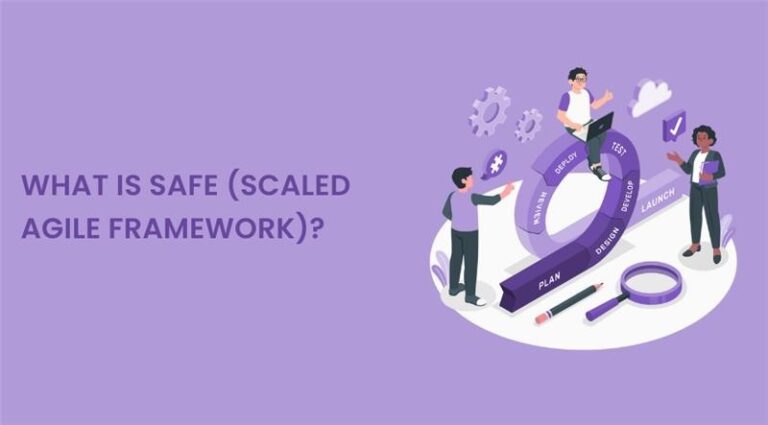Organisations across industries are seeking effective methodologies to deliver high-quality software and products faster while maintaining flexibility and responsiveness. This is where SAFe, which stands for Scaled Agile Framework, comes into play. Are you curious about SAFe (Scaled Agile Framework) and the benefits it brings to organisations? Have you heard about SAFe Certification and wondered what it entails? This blog post will explain What is SAFe, its certification and its key components.
Table of Contents
- What is SAFe?
- SAFe Certification
- Key components of SAFe
- Conclusion
What is SAFe?
At its core, SAFe is a framework designed to align and synchronise the efforts of multiple agile teams working on a large-scale project. It provides a set of guiding principles, practices, and roles necessary for organisations to adopt and implement agile methodologies effectively across the enterprise.
The primary objective of SAFe is to enable organisations to deliver value to their customers with faster time-to-market, increased productivity, improved quality, and enhanced customer satisfaction. By implementing SAFe, organisations can break down silos, foster collaboration, and create an environment that promotes continuous improvement and innovation.
SAFe Certification
Scaled Agile Framework (SAFe) offers certification programs for individuals and organizations. These certifications provide professionals with the knowledge and skills they need to implement SAFe effectively.
The certifications range from SAFe Agilist (SA) and SAFe Practitioner (SP) to SAFe Scrum Master (SSM), SAFe Advanced Scrum Master (SASM), and SAFe Product Owner/Product Manager (POPM). These certifications demonstrate an individual’s ability to use SAFe to improve business operations and promote agile practices in the organization.
Key Components of SAFe
SAFe consists of various interconnected components that work together to facilitate agility and streamline business processes. Let’s explore some of the key components:
- Agile Release Train (ART): ART is a long-lived team of agile teams that operates on a fixed cadence to deliver value incrementally. It serves as the primary organisational construct in SAFe, bringing together cross-functional teams, stakeholders, and resources to work toward a common business objective.
- Program Increment (PI): PI is a timebox that usually lasts 8-12 weeks and serves as the primary planning and execution cycle in SAFe. During a PI, teams plan, develop, and deliver value in the form of working software or products. PI planning sessions are crucial in aligning team objectives and synchronising their efforts.
- Lean-Agile leadership: SAFe emphasises the importance of leadership at all levels of the organisation. Lean-Agile leaders promote a culture of continuous improvement, empower teams, and remove impediments to ensure smooth execution. They act as catalysts for change, inspiring and guiding teams toward achieving business goals.
- Value stream: A value stream represents the series of steps and activities required to deliver a product or service to the end customer. SAFe optimises and visualises value streams to identify bottlenecks, reduce waste, and improve overall efficiency.
Conclusion
SAFe is a framework that helps organizations achieve agility at scale. It provides a comprehensive set of principles, practices, and roles that can be used to improve collaboration, optimize processes, and deliver value to customers more effectively. Whether you are an individual who wants to learn more about agile practices or an organization that is looking to transform its operations, SAFe certification, and implementation can help you unlock the true potential of agility in your business.

0 Comments